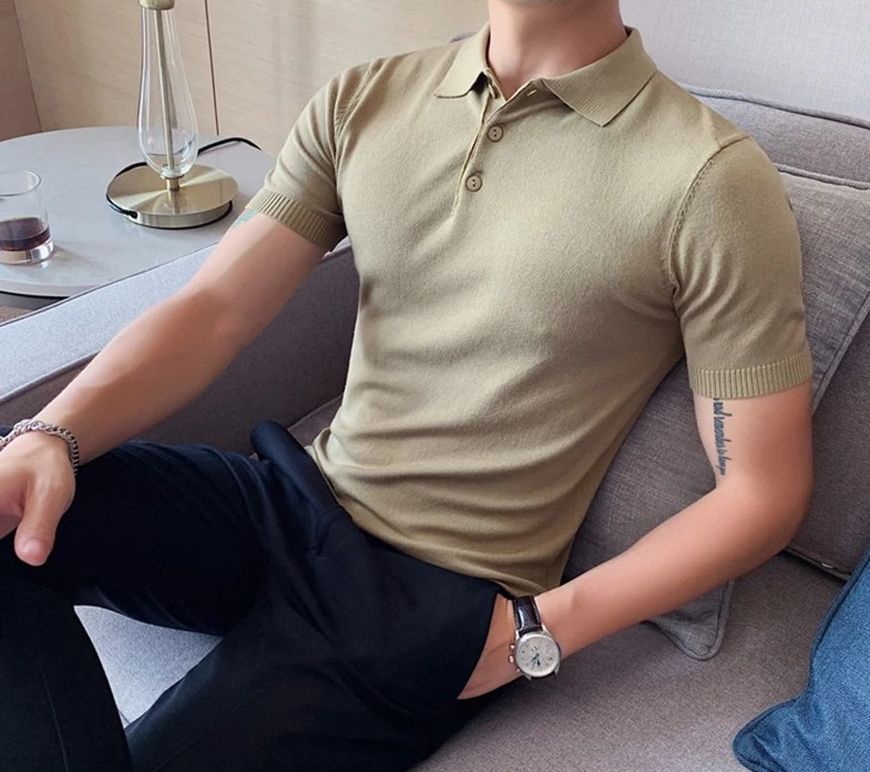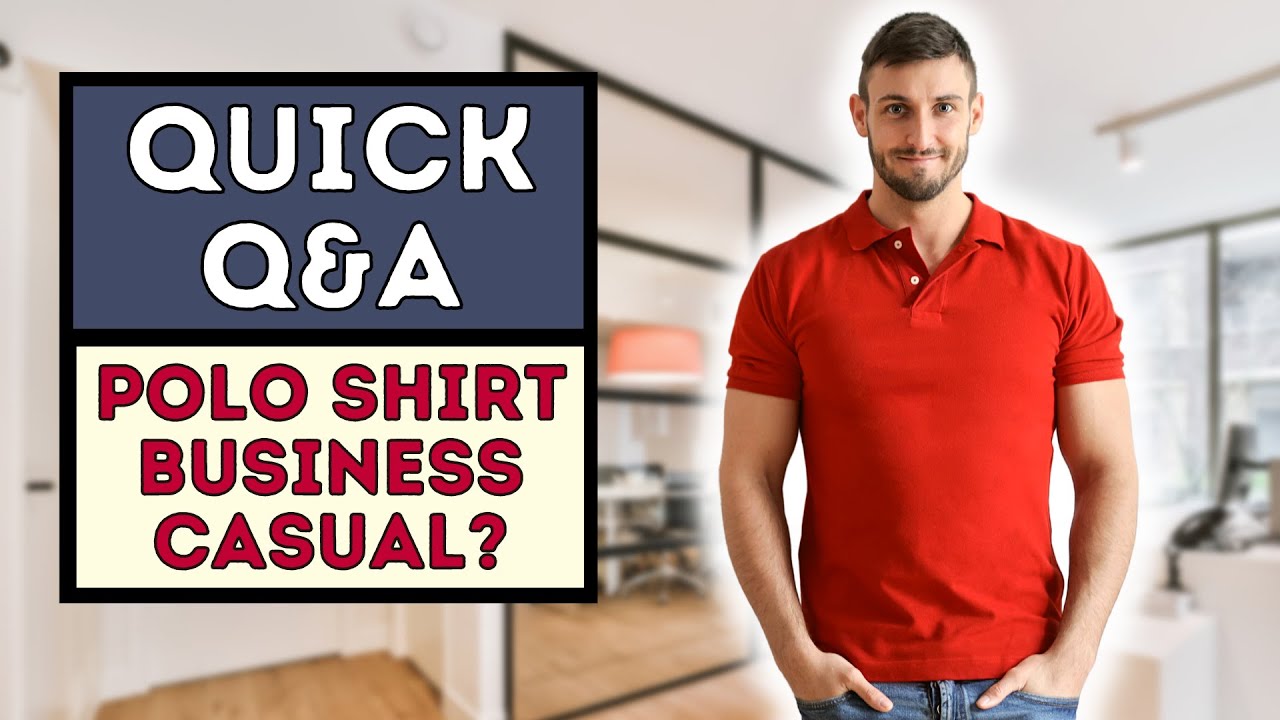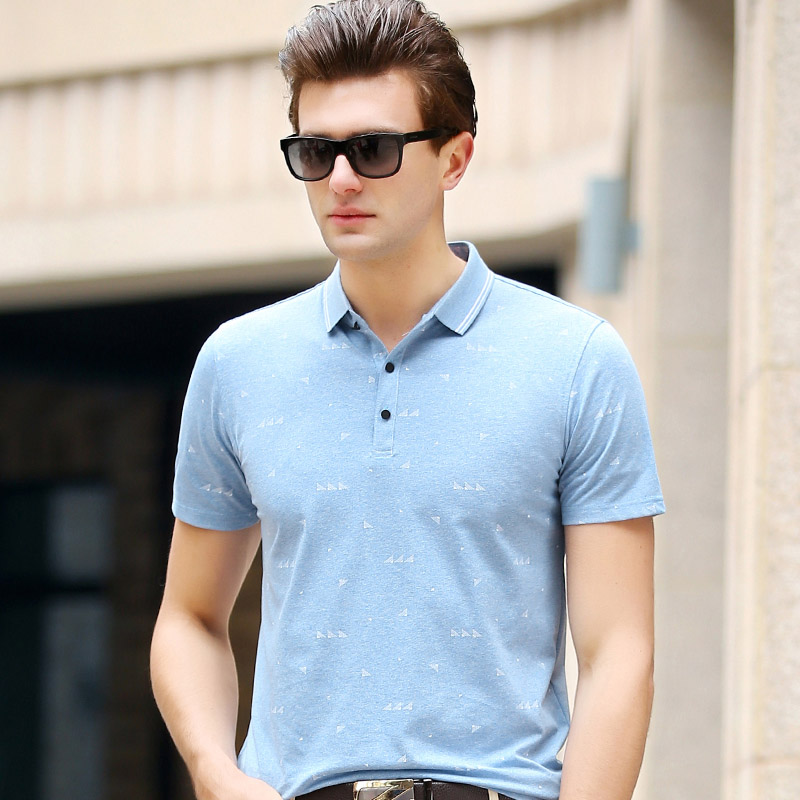Is khakis and a polo business casual? The question itself sparks a debate, revealing the nuanced and often subjective nature of workplace attire. While seemingly straightforward, the answer depends on a complex interplay of factors, ranging from industry standards and company culture to the specific context of the workday. This exploration delves into the intricacies of business casual dress codes, examining the appropriateness of khakis and a polo shirt across diverse professional settings. We’ll navigate the fine line between professional and underdressed, providing insights to help you confidently navigate the world of business casual.
From understanding the core tenets of business casual to exploring alternative options and enhancing a classic khaki-and-polo combination, this guide aims to equip you with the knowledge and confidence to make informed choices about your workplace attire. We’ll examine the influence of company culture, geographic location, and even the season on what constitutes acceptable business casual. Ultimately, the goal is to help you present a professional image that aligns with your workplace expectations while reflecting your personal style.
Defining “Business Casual”

Business casual is a dress code that aims to strike a balance between professional formality and relaxed comfort. It’s a widely adopted standard in many workplaces, offering a more flexible alternative to strictly formal attire while still maintaining a level of professionalism appropriate for a business setting. However, the specifics of what constitutes “business casual” can vary significantly depending on several factors.
Business casual generally involves clothing that is neat, clean, and presentable. While it avoids the strict formality of suits and ties, it also steers clear of overly casual items like jeans, t-shirts, and sneakers in most contexts. The acceptable range can depend on the specific workplace culture and the individual’s role within the company.
Variations in Business Casual Dress Codes Across Industries
The interpretation of business casual differs considerably across various industries. A tech startup might embrace a more relaxed approach, allowing for chinos, button-down shirts, and even stylish sneakers. In contrast, a financial institution might lean towards a more conservative interpretation, favoring tailored trousers, collared shirts, and polished shoes. Similarly, a creative agency might allow for more individual expression within the business casual framework, while a law firm would likely prioritize a more traditional and polished look. These variations reflect the differing workplace cultures and the level of client interaction within each sector. For example, a meeting with high-profile clients might necessitate a more formal business casual look than an internal team meeting.
Comparison of Business Casual with Other Dress Codes
Business casual occupies a middle ground between formal and casual attire. Formal dress codes typically involve suits, ties, dresses, and other traditionally professional garments. The emphasis is on formality, adherence to established norms, and a polished appearance. In contrast, casual attire is highly informal, allowing for a wide range of clothing options, often prioritizing comfort and personal expression. Business casual bridges this gap, offering a more relaxed yet professional appearance. It avoids the rigidity of formal dress while still maintaining a level of professionalism that is suitable for a business environment.
Factors Influencing the Interpretation of Business Casual
Several factors contribute to the diverse interpretations of business casual. Company culture plays a significant role, with some organizations having stricter guidelines than others. The individual’s role within the company also influences attire choices; senior executives might adopt a more formal approach than junior employees. The specific occasion or meeting also impacts the level of formality. A presentation to clients might warrant a more polished look than a casual team lunch. Finally, geographical location and seasonal changes also affect the acceptable range of business casual clothing. A warmer climate might allow for lighter fabrics and shorter sleeves, while a colder climate might necessitate more layers and heavier materials.
Assessing Khakis and a Polo Shirt: Is Khakis And A Polo Business Casual

Khakis and a polo shirt represent a classic and versatile combination often considered a staple of business casual attire. However, the appropriateness of this ensemble depends heavily on factors such as the specific items chosen, the workplace culture, and the context of the event. This section will analyze the visual impact of different khaki and polo shirt combinations and detail scenarios where this outfit is both suitable and unsuitable for a business casual setting.
Appearance of Khakis and a Polo Shirt in Various Contexts
The appearance of khakis and a polo shirt can vary significantly depending on the color, fabric, fit, and overall condition of the garments. A well-fitting pair of dark-khaki chinos paired with a crisp, light-blue polo shirt presents a clean and professional look, suitable for many business casual environments. Conversely, excessively wrinkled khakis or a faded, stained polo shirt can project a careless and unprofessional image, inappropriate for most business settings. The context also plays a role; this outfit might be acceptable for a casual Friday at a tech startup but could appear underdressed at a client meeting in a more traditional industry like finance.
Situations Where Khakis and a Polo Shirt Are Appropriate for Business Casual
Khakis and a polo shirt are generally appropriate for business casual settings that prioritize comfort and a relaxed yet professional atmosphere. Examples include:
- Casual Fridays in many offices.
- Internal meetings or team gatherings.
- Informal client meetings in less formal industries (e.g., tech, design).
- Company picnics or other casual company events.
- Training sessions or workshops.
The key is to ensure the clothing is clean, well-fitting, and in good condition.
Situations Where Khakis and a Polo Shirt Might Be Inappropriate for Business Casual
In some contexts, khakis and a polo shirt may be deemed too informal for business casual. These situations often involve more formal client interactions or events with a higher level of formality. Examples include:
- Meetings with high-level executives or clients in conservative industries (e.g., finance, law).
- Important presentations or business negotiations.
- Formal company dinners or events.
- Job interviews in more traditional settings.
- Industry conferences or trade shows.
In these scenarios, a more polished outfit, such as dress pants and a button-down shirt or a blazer, is typically more appropriate.
Khaki and Polo Shirt Combinations and Their Suitability for Business Casual
The following table compares different khaki and polo shirt combinations and assesses their suitability for business casual attire.
| Khaki Color | Polo Shirt Color | Fabric | Fit | Business Casual Suitability |
|---|---|---|---|---|
| Navy | Light Blue | Cotton | Slim Fit | High |
| Khaki | White | Cotton Twill | Regular Fit | Medium |
| Olive Green | Burgundy | Linen Blend | Relaxed Fit | Low (Considered too casual for most settings) |
| Gray | Gray (Slightly darker shade) | Performance Fabric | Athletic Fit | Medium (Acceptable depending on the office culture) |
Contextual Factors
The appropriateness of khakis and a polo shirt as business casual attire is highly dependent on a variety of contextual factors. These factors extend beyond the inherent qualities of the clothing itself and delve into the nuances of workplace culture, environment, and geographical considerations. Ignoring these contextual cues can lead to misinterpretations of professional expectations and potentially hinder career progression.
Company culture significantly influences acceptable attire. Some organizations foster a relaxed and informal atmosphere, where khakis and a polo shirt would be perfectly acceptable, even encouraged, while others maintain a more traditional and formal approach, rendering such attire unsuitable. Understanding the unspoken rules of a particular company’s dress code is crucial for navigating professional expectations.
Company Culture’s Influence on Business Casual Attire
Company culture significantly shapes acceptable attire. A startup known for its innovative and relaxed environment might embrace khakis and a polo shirt as standard business casual, while a more established financial institution might prefer a more polished look, even within a business casual setting. Observing colleagues’ attire and referencing any internal style guides are effective strategies for gauging acceptable dress within a specific company culture. For example, a tech company in Silicon Valley might have a more casual dress code than a law firm in New York City. The difference reflects the varying priorities and values of each industry and organization.
Work Environment’s Impact on Dress Code Appropriateness
The specific work environment significantly affects the appropriateness of khakis and a polo shirt. In a typical office setting, khakis and a polo shirt are often considered acceptable business casual. However, a field-based role requiring physical activity might necessitate more practical and durable clothing. Similarly, client meetings often demand a slightly more formal approach, potentially requiring a more polished outfit than khakis and a polo shirt. Consider a construction worker meeting with a client – a suit might be too formal, but khakis and a polo might appear underdressed, especially if it’s a high-value contract.
Geographic Location and Seasonal Influences
Geographic location and the season also play a role in determining appropriate attire. In warmer climates, lighter-colored khakis and breathable polo shirts might be preferable, while colder climates might necessitate darker colors and layering. For example, a summer workday in Miami might call for linen khakis and a short-sleeved polo shirt, while a winter workday in Chicago might require heavier cotton khakis, a long-sleeved polo shirt, and a sweater. Furthermore, cultural norms in different regions can also subtly influence appropriate attire, adding another layer of complexity.
Suitability of Khakis and a Polo Shirt in Various Workplaces
The suitability of khakis and a polo shirt varies greatly across different professional settings.
- Suitable: Many tech companies, advertising agencies, educational institutions (particularly in less formal roles), some retail environments, and certain creative industries.
- Unsuitable: Most financial institutions, law firms, government agencies, formal client meetings (especially with high-profile clients), and roles requiring direct interaction with high-level executives or clients in traditional industries.
Alternatives and Enhancements
The classic khakis and polo shirt combination, while versatile, can benefit from thoughtful alternatives and enhancements to elevate its professional appearance within a business casual setting. Exploring different fabrics, styles, and accessories can significantly impact the overall impression, transforming a simple outfit into a polished and sophisticated look.
Beyond the standard khaki trousers and cotton polo shirt, numerous options exist to maintain the comfort and approachability of business casual while projecting a more refined image. Strategic accessorizing can also play a crucial role in achieving this goal.
Alternative Outfit Options
Several alternatives to the traditional khakis and polo shirt combination offer a fresh perspective while adhering to business casual standards. These options provide versatility and allow for individual style expression without compromising professionalism.
For example, chino trousers in navy or olive green paired with a button-down Oxford shirt in a light blue or crisp white offers a slightly more formal yet still comfortable alternative. Alternatively, dark-wash denim (in good condition and without distressing) combined with a well-fitting, solid-colored henley shirt provides a more modern and relaxed business casual look. Finally, corduroy trousers (in a subtle color like brown or charcoal) worn with a merino wool sweater (buttoned or unbuttoned, depending on the context) create a warmer and more textured outfit suitable for cooler months.
Enhancing the Khakis and Polo Shirt Outfit
Simple adjustments can significantly improve the appearance of a khakis and polo shirt outfit. Focusing on fit, fabric quality, and thoughtful accessorizing can transform the look from casual to business casual appropriate.
Ensuring the polo shirt fits well, neither too tight nor too loose, is paramount. Opting for a higher-quality polo shirt made from a breathable, wrinkle-resistant fabric like pique cotton or a performance blend will enhance the overall look. Similarly, well-fitting khakis that are free of wrinkles and creases contribute to a more polished appearance. Ironing both the khakis and the polo shirt before wearing them is a simple but effective way to elevate the outfit.
Accessorizing the Khakis and Polo Shirt Outfit, Is khakis and a polo business casual
Strategic accessorizing can significantly enhance the overall impression of a khakis and polo shirt outfit. Three distinct approaches showcase the versatility of this simple combination.
Visual Description 1: A brown leather belt with a subtle buckle, a classic leather watch with a simple face, and clean, dark-colored socks paired with loafers or oxfords create a sophisticated and refined look. The leather belt adds a touch of formality, while the watch adds a detail of personal style. The dark socks and polished shoes complete the polished ensemble.
Visual Description 2: A woven leather belt in a neutral color, a stylish but understated watch (perhaps with a metal band), and patterned socks (but still maintaining a professional tone, avoiding overly bright or loud patterns) paired with clean, well-maintained sneakers or boat shoes creates a more relaxed yet still professional look. The textured belt adds visual interest, while the patterned socks introduce a touch of personality without being distracting.
Visual Description 3: A simple, high-quality knit tie (in a complementary color to the polo shirt) worn loosely, a classic metal watch with a leather band, and solid-colored dress socks with leather oxfords creates a more formal business casual look. The knit tie adds a layer of sophistication and professionalism without being overly formal.
Impact of Shoe Choice
The choice of footwear significantly impacts the overall impression of a khakis and polo shirt outfit. Different shoe styles can convey varying levels of formality and professionalism.
For a more formal business casual look, leather oxfords or loafers in brown or black are ideal. These shoes instantly elevate the outfit, suggesting a more polished and professional image. For a slightly more relaxed yet still appropriate look, boat shoes or clean sneakers (in neutral colors and without excessive branding) can be chosen. However, it’s crucial to ensure the sneakers are in excellent condition and clean. Conversely, sandals, athletic shoes, or heavily worn footwear would be inappropriate for a business casual setting, regardless of the rest of the outfit.
Potential Misinterpretations

While khakis and a polo shirt represent a widely accepted interpretation of business casual, the potential for misinterpretation exists, particularly depending on the specific workplace culture and the overall presentation of the outfit. A seemingly innocuous choice of clothing can inadvertently convey a lack of professionalism or seriousness, undermining the desired impression in a business setting.
The risk of appearing underdressed or unprofessional stems from the inherent ambiguity of “business casual.” This lack of strict definition allows for considerable individual interpretation, leading to potential discrepancies between the wearer’s intent and the recipient’s perception. A perfectly acceptable outfit in one company might be considered too casual in another, highlighting the importance of understanding the unspoken rules of a specific workplace. The fabric, fit, and condition of the khakis and polo shirt also play a significant role in how the outfit is perceived. Faded, wrinkled, or ill-fitting garments will invariably project a less professional image than crisp, well-maintained attire.
Factors Influencing Misinterpretation
Several factors contribute to the potential for misinterpretation. The color of the polo shirt (e.g., a bright, vibrant color versus a more subdued tone) can significantly affect the overall impression. Similarly, the style of the khakis (e.g., cargo pants versus classic straight-leg) and the presence of any additional accessories (e.g., a baseball cap versus a stylish watch) can subtly shift the perception of professionalism. The context of the meeting or event is also critical; a khakis and polo combination might be suitable for a casual team meeting but inappropriate for a client presentation or a formal interview.
Avoiding Common Pitfalls
To mitigate the risk of misinterpretation, careful consideration of the workplace culture and the specific occasion is paramount. Observing the attire of senior colleagues or other professionals in the company can offer valuable insights into acceptable standards. Prioritizing quality garments—well-fitting, wrinkle-free khakis and a polo shirt in a neutral or subtly patterned color—demonstrates attention to detail and professionalism. Accessories should be carefully chosen to complement the outfit without detracting from its overall professional appearance. A simple, quality leather belt and clean, polished shoes can elevate the look significantly. Finally, ensuring the outfit is clean and well-maintained is crucial for projecting a professional image.
Scenario and Alternative Suggestion
Imagine a young professional attending a crucial client meeting for a high-profile tech company. They opt for beige khakis, a slightly faded navy polo shirt, and worn sneakers. This outfit, while comfortable, could be misinterpreted as lacking seriousness and professionalism, potentially damaging the company’s image and the individual’s credibility. A more appropriate alternative would involve a pair of well-fitting dark-colored chinos, a crisp, ironed light blue or white polo shirt, and polished leather loafers. This refined ensemble projects competence and respect, aligning better with the expectations of a high-stakes business meeting.






